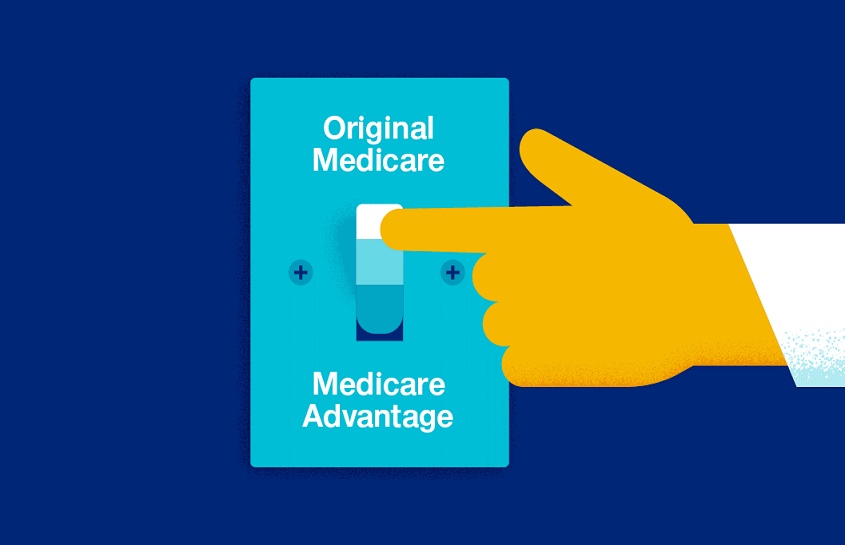As we approach 2025, the healthcare industry is constantly changing, with the Medicare Advantage program significantly contributing to this development. Over the years, Medicare Advantage plans—also referred to as Medicare Part C—have undergone several improvements and adjustments. This post will examine the most recent changes, patterns, and issues about Medicare Advantage plans in 2025.
Technological Integration and Telehealth Services:
Technological developments have dramatically changed how medical services are provided in the ever-changing healthcare field. Find plans for 2025 that are leading the way in implementing cutting-edge technology as we approach 2025, with a focus on telehealth services in particular. Unprecedented expansion in telehealth services has made them a mainstay in the medical field. Medicare Advantage plans’ approach to managing chronic diseases is about to change thanks to the radical incorporation of remote monitoring technology.
Geographical restrictions are removed via telehealth, giving recipients unparalleled access to expert advice. Beyond virtual consultations, digital health platforms provide individualized treatment experiences through technological integration. Although there are many advantages to telehealth, there are drawbacks to its broad use. This section will cover topics including worries about the digital divide, technical literacy, and regulatory hurdles.
Expanded Benefits and Coverage Options:
Medicare Advantage plans are leading the way in giving comprehensive coverage beyond conventional options as healthcare changes. By 2025, beneficiaries could anticipate many enhanced benefits and coverage alternatives to cater to a broader range of medical requirements. Medicare Advantage plans will probably provide more preventative treatments than just regular checkups by 2025. It’s no secret that mental health is becoming more and more critical, and by 2025, Medicare Advantage plans should include better mental health treatment.
Medicare Advantage plans are changing to include more specialized therapies and treatments in their coverage. Medicare Advantage plans are expected to provide more comprehensive exercise and wellness programs in an era where health and well-being are significant concerns. There are dental limits with traditional Medicare.
Personalized Care and Chronic Disease Management:
Innovative methods for managing chronic diseases and personalized treatment are receiving much attention in the rapidly changing healthcare field. Medicare Advantage plans, which customize healthcare experiences to meet the specific requirements of each beneficiary, are leading this change as we approach 2025. Medicare Advantage plans will prioritize individualized care plans by 2025 to meet each beneficiary’s unique requirements better.
It is anticipated that Medicare Advantage plans would enable more patient participation through collaborative decision-making procedures. Beneficiaries can receive individualized care from the comfort of their homes, thanks primarily to telemedicine. We will examine how Medicare Advantage plans use telemedicine to improve healthcare by offering virtual consultations, remote monitoring, and real-time communication.
Affordability and Cost-sharing Models:
For Medicare seniors, healthcare costs continue to be a significant factor as we approach 2025. Medicare Advantage plans’ cost-sharing and affordability structures are constantly changing to offer complete coverage while considering people’s various financial situations. This article will explore how Medicare Advantage plan premium structures may change by 2025. The two main elements of cost-sharing in healthcare are co-pays and deductibles. In this section, we’ll look at how Medicare Advantage plans are rethinking deductible and co-pay arrangements.
It will showcase creative plans that compromise beneficiaries’ cost-sharing obligations and affordability, especially for individuals with ongoing medical requirements or chronic illnesses. Financial certainty is essential for beneficiaries to manage their healthcare expenditures. The article will discuss the implementation of out-of-pocket maximums by Medicare Advantage plans, giving beneficiaries a clear cap on annual expenses.
Regulatory Changes and Policy Updates:
The Medicare Advantage plan structure is shaped mainly by regulatory changes, subject to constant modification in the healthcare industry. As we approach 2025, beneficiaries, providers, and insurers must be current on the most recent policy modifications that impact the provision and accessibility of healthcare services. Regulations that affect plan offers and network arrangements also affect Medicare Advantage programs. To guarantee the provision of high-quality healthcare, regulatory agencies often develop new performance requirements and quality indicators.
The integration of telehealth into healthcare services has witnessed a boom in popularity, and regulatory backing is essential to this development. The reimbursement environment is changing due to the move towards value-based care and alternative payment methods. Regulatory modifications frequently impact Medicare formulary arrangements and pharmaceutical availability.
Comparing Traditional Medicare and Medicare Advantage:
The selection between Traditional Medicare and Medicare Advantage continues to be crucial as people get closer to deciding to choose their Medicare coverage. Both choices have unique benefits in 2025, and recipients must be aware of their subtle differences. Hospital (Part A) and medical service (Part B) coverage are provided by traditional Medicare, with the possibility of adding a separate prescription drug plan (Part D).
Medicare Advantage plans, on the other hand, provide a comprehensive package that includes hospital, medical, and frequently prescription medication coverage. The cost of any plan is an essential factor for beneficiaries to consider. To assist readers in weighing the costs associated with each choice, a thorough comparison of Traditional Medicare and Medicare Advantage premiums, deductibles, and co-pays will be provided in this article.
Conclusion
Understanding the nuances of Medicare Advantage plans is crucial for both present and potential beneficiaries as we look ahead to the state of healthcare in 2025. This thorough guide aims to arm readers with the knowledge they need to understand Medicare Advantage’s changing environment and make decisions that best suit their healthcare requirements.

